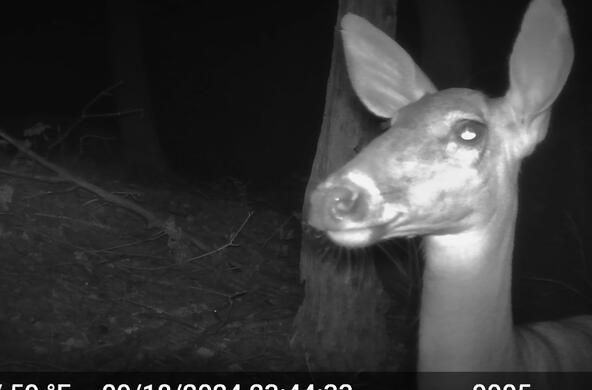The following is an interview by Lori Quillen, communications director for the Cary Institute of Ecosystem Studies, with Akiko Busch, author of “The Incidental Steward” (Yale University Press, 2013).
You’re no stranger to immersing yourself in nature. “Nine Ways to Cross a River” documented your swims across eight major waterways. “The Incidental Steward” is anchored in the Hudson Valley. Were there common threads to both experiences?
All of these — whether swimming across a river, looking for migrating herring, or counting eels — are what I like to think of as experiential activism. That is, they’re all ways of engaging with the natural world that also, in some way, lead you to the facts about a place and make an effort to add to some broader knowledge base.
From counting herring from a bridge to tracking the spread of the destructive emerald ash borer, your citizen science experiences ran the gamut. Which did you find most rewarding?
One of the projects I try to do every year and that I really love most is taking measure of the water celery beds in the Hudson, a citizen-science project from the Cary Institute. Water celery is a kind of sub-aquatic vegetation that is an indicator of water quality. Seeing how much of it is out there is a great excuse to spend a summer afternoon in a kayak on the river, but when the data reflects measurable facts about water quality, and when those facts come into play as local planners make decisions about waterfront development, that connection to the river goes deeper. A sustaining experience all around.
A number of citizen science efforts focus on the Hudson River. Are they, in some measure, part of the story of the river’s ongoing ecological recovery?
There seems to be something innately restorative about spending time at the river, and as American waterways become cleaner, that sense of renewal and restoration often extends to the waterfront and communities on it. Volunteer participation can be a real part of that reclamation, whether in community-based cleanup events or monitoring programs run by environmental organizations.
Compared to amateur naturalists of days gone by, do citizen scientists have different qualities?
Amateur naturalists and how they pay attention to the rhythms and disturbances of nature have a long history in our country’s cultural life. But several factors distinguish today’s citizen scientists from their predecessors. First is the sense of urgency. Whether it’s a warming climate, a population of 7 billion plus, habitat loss or extinctions, we live in a time when catastrophes of our own making are visited regularly on the natural world. It only makes sense that we would be motivated by such events. Second, new technologies — GPS, Internet databases, interactive websites and mobile phone apps — can all help in collecting and sharing information. Third, it’s good economic sense to use volunteers when the scientific community is ever stretched for financing. Finally, for naturalists of past generations, the consideration of nature was often a solitary enterprise — John Muir’s walk to the sea, Thoreau’s cabin by the pond, Aldo Leopold’s shack by the river. But the study of nature today can be collaborative. When the snowy owl migrated from the Arctic to the lower 48 states last winter in unexpectedly high numbers, their sightings were reported on eBird, allowing birders to share information and generate broader public interest and knowledge.
What’s an unappreciated benefit of engaging in citizen science?
Eventually, you find it’s a way of paying attention, noticing what’s happening around you right at that moment. So often, people tune into the natural world only after huge, cataclysmic events — hurricanes that shred the shoreline or floods that devastate homes. But environmental change happens in small increments. All these endeavors are a way of fine-tuning our powers of observation so we can become better aware of these smaller parts.
Does the scientific community view the natural world differently than their non-scientist counterparts?
I’ve become convinced that scientists are on much friendlier terms with doubt than the rest of us. They live with doubt and are familiar with uncertainty, accepting these as conditions of their work and thinking. The rest of us tend to want quick answers.
What advice would you give to a reader who wants to feel more connected to nature, but doesn’t know where to begin?
There are all kinds of phone apps that enable observant naturalists to contribute to wildlife counts. But the Hudson River Estuary Program offers some really great citizen stewardship volunteer opportunities, boots-on projects that take you out into the field, or waterway, in everything from herring and eel monitoring and amphibian counts to tree planting and stream assessments.
Is our region unique in the variety of citizen science outlets available?
While the Hudson Valley offers a particular range of research opportunities, citizen science is happening in all parts of the country — on land and water alike. Citizen Science Central at the Cornell Lab of Ornithology works as a kind of gateway to these programs nationwide and includes endeavors in everything from mammals, birds, invertebrates and plants, to air quality, water quality and more.






